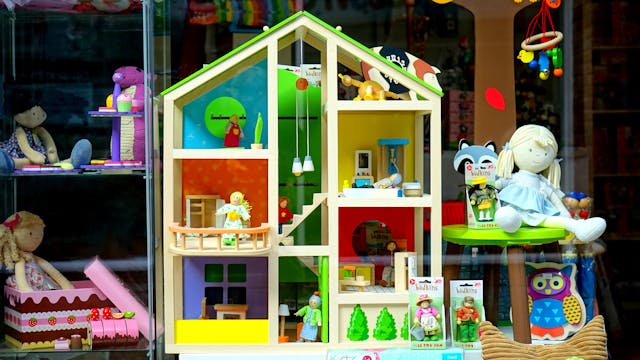Do you know that too many toys can harm your child’s development? Children are often bombarded with various toys and entertainment options, but it’s important to be aware of the negative impact it can have. Children with too many toys tend to have shorter attention spans, share less, and have less creativity.
So, what’s the solution? Jennifer Stalley, founder and president of Meemzy Magic, a company that focuses on the power of play, recommends reducing the number of toys your child has. Less clutter paves the way for a more focused, creative, and joyful learning experience.
1. Quality Over Quantity
Jennifer recommends selling old toys and opting for quality second-hand toys from platforms like Facebook Marketplace or a local “buy nothing group”. She emphasises, “Sometimes having too many toys isn’t doing much for your child. It can be overwhelming because clutter increases cortisol, the stress hormone, and can make it hard to find something to play with. Too many toys also make it harder to teach good habits like how to keep your space clean and organised. It’s about having the right toys that stimulate imagination and creativity.”
2. Brain-Boosting Toys for Little Innovators
When selecting toys, prioritise those that are open-ended to encourage problem-solving and creative thinking. Jennifer advises, “Choose toys that challenge your child’s mind, fostering problem-solving skills and igniting their creative thinking. Children know how to play innately; the hard part as a parent is stepping back and letting them lead instead of inserting themselves and taking control. ”
3. Tailored Adventures for Growing Minds
Stay ahead of your child’s developmental needs by subscribing to toy services that provide age-appropriate toys as your little one grows. Jennifer notes, “This keeps things fresh and exciting and ensures your child is engaged in activities that match their cognitive and physical development.”
4. Crafting Sensory Wonders at Home
Engage in affordable DIY sensory bins at home to enrich your child’s sensory play. Jennifer suggests, “Simple materials like rice, beans, and textured fabrics can spark their curiosity and enhance sensory experiences, fostering a deeper understanding of the world around them.”
5. Library Treasures
Instead of amassing a personal library, utilise community resources like libraries to check out books. Jennifer advises, “This saves space and encourages a love for reading. Plus, it’s a sustainable practice that instils the importance of sharing resources within the community.”
6. Nature’s Playground
Encourage outdoor play for physical health and overall well-being. Jennifer highlights, “The outdoors support the development of all the senses and contribute to mental health. It’s a free, endless playground where children can explore, discover, and learn. Help your little one slow down and relax by noticing the smells, feels, and sounds out in nature. Is the grass nice and cool? Does the warm sand feel good on your feet? What sounds are the bees making? ”
Follow these tips to simplify play and encourage healthy development for your child.
- Imelda Perez



